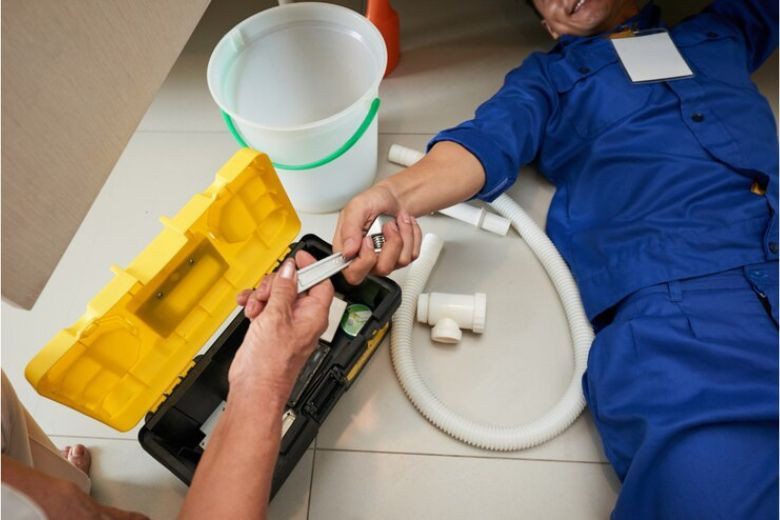How to Identify and Repair Hidden Water Leaks
Posted on August 29, 2024 by Admin

Unchecked conceited or hidden water leaks may lead to much damage to the house. They cause problems with the structure and provide a haven for mold growth, among other causes of higher-than-usual water bills. Learning how to detect and fix a hidden leak is very important in any process of maintaining a healthy and efficient home. Here's the full scoop on how to identify and fix those pesky hidden problems.
Detecting Hidden Water Leaks
1. Monitor Your Water Bill
Probably the very first sign of hidden leakage in your home would be an increased water bill. If you feel like your consumption has increased over time, yet, in fact, you haven't changed that much, maybe it's time to start searching for those hidden leaks.
2. Monitor the Water Meter
First, to find an undetected leak, turn off all sources of water in your home and take a reading on the water meter. Then, stay off the water for some hours and read the meter once more. Provided that the readings have changed, you might be suffering from a hidden leak somewhere in your residential water system.
3. Check your walls and ceilings
Furthermore, water staining or discoloration and peeling paint or wallpaper can be indicative of a hidden water leak. This can be an indication that there is water running down your walls and ceilings. In most cases, it is a result of a pipe leak you may not even be aware of.
4. Mold and Mildew Check
Mold and mildew require a damp environment to thrive. So, if you smell something musty or have actually seen mold in your home, this could be an indication of a concealed leak. In most cases, mold will develop behind the walls, under the floor, and in other places that are virtually impossible to see where a leak may be occurring.
5. Dripping and Running Water Sounds
Many times, when the faucets are turned off, a continuous flow or even just a dripping sound of water can be heard. This might indicate the presence of a hidden leak, mainly in pipes that are behind walls and under the floors.

How to Repair Hidden Water Leaks
1. Locate the Leak
Now, after having found an indication of a concealed water leak, the next step will be locating it. This can be quite tricky, but the use of a moisture meter shall help to determine the area of highest moisture; you might also need to cut some small holes in walls or ceilings to find the source.
2. Shut Off the Water Supply
First, shut off the supply when you've found a leak to prevent further damage. Shut off the big cutoff valve that supplies water to your whole house.
3. Fix the Leak
Depending on where the leakage is originating from and how bad it could be, you may have to repair or replace your damaged pipe. Small leaks can be sealed using a pipe repair clamp or epoxy putty, but serious ones or in areas where accessibility is hard require contacting a professional plumber for appropriate repair.
4. Dry the Area Completely
After stopping the leak, try to dry out the area as much as possible. Running fans and dehumidifiers, opening windows goes a long way in speeding up the drying process. Avoid mold buildup.
5. Monitor the Patch
Watch your patch for signs the leak returns. Continue to read your water meter regularly, look for new water marks, mold, or unusual water usage.
Must Read : The Benefits of Regular Drain Cleaning Services
Conclusion
It will save your house from many severe water damages if the hidden leaks are found and repaired. Be observant to the water bills, monitor leakage signs in your home, and act promptly on the hidden leaks to repair them for a safe and efficient plumbing system. Whether you're doing minor repairs on your own or seeking major fixes through a professional, the early detection of those sneaky water leaks is what's going to save you money on repairs and keep the integrity of your home intact.
Faqs
-
1. What are the usual indications of hidden water leaks?
The most commonly experienced symptoms of a potential hidden leak include rising water bills, water marks on the walls or ceilings, mold and mildew, and dripping or running water sounds when all the faucets are turned off.
-
2. How can I use my water meter to check for leaks?
Using your Water Meter to Find a Leak: Turn off all the water sources in the house, and record the reading on the meter. Wait several hours without using any water and read the meter again. If the reading has changed, you may have a hidden leak in the system.
-
3. What are some tools that can help find hidden leaks?
Tools to discover hidden water leakage include devices for measuring moisture, which points to a high moisture spot, and thermal imaging cameras that may differentiate temperature changes behind the walls due to water leakage.
-
4. Can I repair hidden water leaks myself or do I need to call a professional?
You can also do the repairing of your hidden water leaks by yourself, especially in cases of smaller leaks, using pipe repair clamps or epoxy putty. In severe cases or places you cannot reach easily, it is always best to call for a professional plumber to take care of the situation and avoid further damage.
-
5. How can I keep mold from growing after I fix a water leak?
After fixing a leakage, dry up the place completely with fans, dehumidifiers, and open windows to prevent the growth of mold. Ensure the place is completely dried since mold grows on damp places. Check the place from time to time for any leakage or sign of leakage.
Recent Post
- Top Plumbing Service Providers in Arizona, USA
- Top 10 Electrician Service Providers in Alabama, USA
- Top 20 Roof Repair Service Providers in Alabama, USA
- The Role of Roof Insulation in Energy Efficiency: Tips and Tricks
- Understanding Roof Damage from Wildlife and How to Prevent It
- How to Choose the Best Roofing Contractor for Emergency Repairs
- Roofing Maintenance for Historic Homes: Preserving Architectural Integrity
- The Importance of Proper Attic Ventilation for Roof Health
- How to Identify and Prevent Roof Mold and Mildew
- The Best Practices for Removing Snow from Your Roof